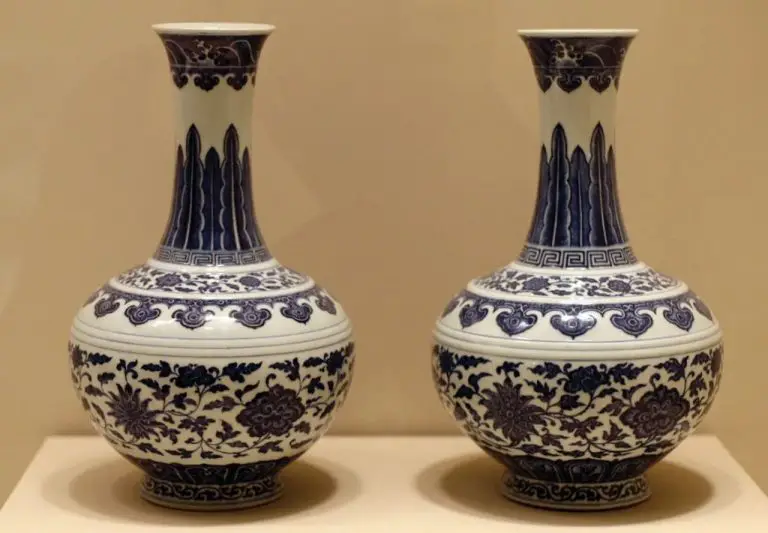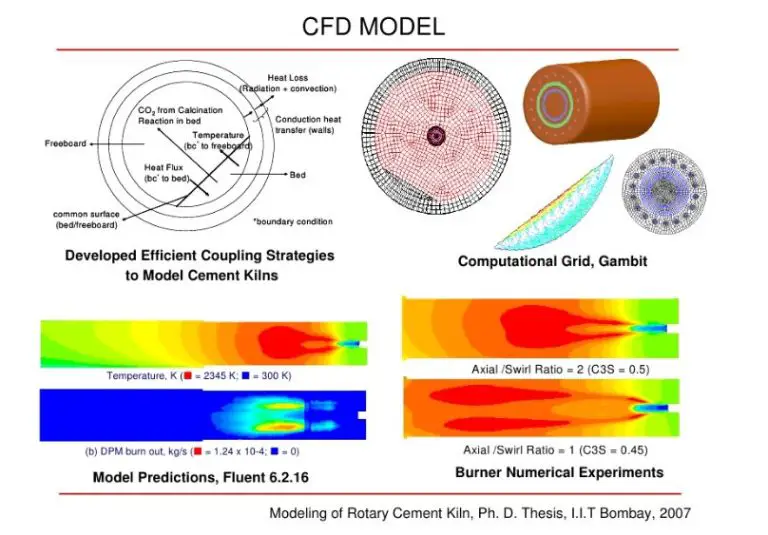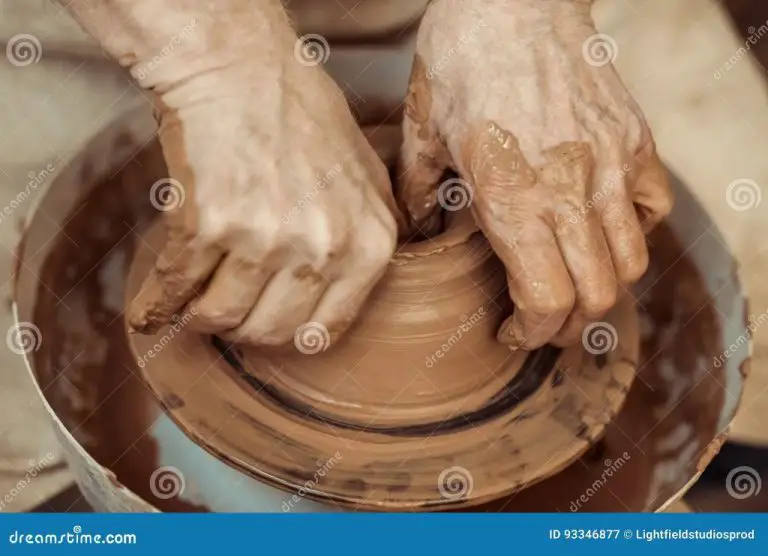What Makes Clay Strong?
Clay is a naturally occurring material composed primarily of fine-grained minerals, which is plastic when wet but hard when fired. Clay has been used for making pottery, bricks, and tools since prehistoric times. Today, clay remains an important material for a wide range of applications from construction to industrial uses.
One of the key properties of clay that enables its versatility is its strength. Clay can be molded into almost any shape when wet, yet become extremely hard and durable when fired at high temperatures. Understanding what makes clay strong can help optimize clay materials and products.
Clay Composition
Clay is composed of very small particles derived from the chemical weathering and decomposition of rocks. The primary minerals that make up clay are silica, alumina, and water. Silica (SiO2) is silicon dioxide and gives clay its hardness and strength. Alumina (Al2O3) is aluminum oxide which contributes plasticity and workability. Water interacts with the silica and alumina to influence the clay’s structure and properties. Other minerals like iron, magnesium, potassium, sodium, calcium, and organic matter are also present in smaller amounts and affect the clay’s color and firing characteristics.
The chemical composition and mineral balance distinguish different types of clay. Kaolin clay consists almost entirely of kaolinite which is a hydrated aluminum silicate (Al2Si2O5(OH)4) formed by chemical weathering of aluminum silicate minerals like feldspar. Ball clay has high kaolinite content along with other clay minerals and trace amounts of quartz, feldspar, micas, and organic matter. Fire clay contains a high percentage of alumina and silica with very little fluxing impurities.
The small size of clay particles gives it high surface area for chemical interactions. Clay’s composition allows it to be molded when wet and become hard and durable when fired, making it ideal for producing pottery, ceramics, bricks, and other structural materials.
Clay Structure
Clay has a layered crystal structure consisting of silicate tetrahedral and octahedral sheets stacked on top of each other. The silicate sheets are made up of silicon, aluminum, and oxygen atoms arranged in a hexagonal pattern. This layered structure allows clay particles to form thin, flat plates with large surface areas.
The stacking and orientation of the silicate layers influence the strength of clay. If the layers are aligned face-to-face, the bonds between them are stronger, allowing the clay to withstand greater pressure before deforming. The more ordered and tightly stacked the layers are, the stronger the clay tends to be.
The flat shape and fine grain size of clay particles also contributes to strength. With more surface area in contact, more bonds can form between particles to create a dense, less porous clay structure. The particle interactions and surface forces keep the layers held tightly together. Reinforcing fillers can help further bridge and bind particles.
Overall, the layered crystal structure and resulting particle shape provide clay the ability to form a strong, cohesive, and durable material when dried or fired. The orientation and bonding between structured sheets of silicates make clay resistant to deformation under force.
Firing Clay
Firing, also known as sintering, is the process of exposing clay products to high temperatures in a kiln. This heating process causes the clay particles to undergo vitrification, which significantly strengthens the final ceramic material.
Vitrification refers to the melting of clay particles on the surface and at points of contact with other particles. As the clay is heated, fluxes present in the clay composition start to melt at around 1050°C. These molten fluxes act as a glassy cement that flows into the pores between clay particles, chemically bonding them together.
The more a clay body vitrifies, the less porous and more durable it becomes. Vitrified clay is essentially non-porous, highly resistant to water, and has very high mechanical strength compared to unfired clay. This makes vitrified ceramics suitable for applications that require strength, low permeability and high resistance to chemical attack.
The level of vitrification depends on the composition of the clay body, the firing temperature and the heating rate. High firing temperatures generally increase vitrification, densification and strength. However optimizing these properties requires careful control over the entire firing process.
Clay Plasticity
Clay is highly plastic when wet, which contributes to its strength in the following ways:
– It allows clay to be molded and worked into shapes and forms. This enables clay items, like bricks and tiles, to hold structural shapes when dried and fired.
– Due to its plasticity, clay particles can slide over each other when molded under pressure. This densifies the clay, so it becomes tighter packed and more solid when dried/fired.
– Clay’s plasticity allows it to be formed into thin sheets and slabs. It also shrinks without developing cracks or impurities when wet clay dries. This makes it possible to create dense, highly cohesive ceramic structures.
– Plasticity also enables clay to wrap around aggregates and fillers, like sand and grog. These inclusions then provide reinforcement and strength when the clay is fired, thanks to the cohesive bond between the plastic matrix and the inclusions.
– The thixotropic properties of wet clay also enable it to become stiff and harden over time as it dwells in the shape it was molded into. This directly translates into strength, as more solid clay items can support greater loads/pressures.
Clay Particle Size
The particle size of clay has a significant effect on the strength of finished clay products. Specifically, clays with smaller particle sizes typically result in stronger fired ceramics and pottery.
Smaller clay particles have more surface area relative to their volume. This increased surface area allows more contact between particles once the clay dries and is fired. The increased contact creates more bonds between particles, resulting in a denser and mechanically stronger ceramic structure.
In addition, smaller particles can pack together more tightly and with less void space than larger particles. This increases fired clay’s density and hardness. Finer particle sizes usually have higher plasticity as well, enabling the clay to be worked into thinner and more intricate shapes with fewer defects or cracks.
As an example, porcelain clays have very fine clay crystals on the order of 1-4 microns in size. This microscopic particle size contributes to porcelain’s high strength and low porosity after firing. In contrast, earthenware and stoneware clays have coarser particles and are consequently more porous and permeable when fired under similar conditions.
Clay Density
The density of clay, which refers to how tightly the clay particles are packed together, has a significant impact on the overall strength of clay. Densely packed clay particles leave less space between them, allowing stronger bonds to form between the particles.
Clays like kaolinite and montmorillonite have a layered structure that allows the plates or sheets of clay particles to stack closely together as they are compressed. This results in minimal voids or pores between the particles, creating a dense mass of bonded clay. The lack of pores makes it difficult for cracks to propagate.
In contrast, low density clays have more space between loosely packed particles. With fewer particle-to-particle contacts, the attractive forces are decreased, reducing the strength. There are also more pores and defects for cracks to grow through. Consequently, tightly packed, dense clay has enhanced rigidity and load-bearing capacity compared to low density clays with the same composition.
Reinforcing Fillers
Clay bodies can be strengthened and reinforced through the addition of certain fillers like grog (pre-fired clay particles) and organic fibers. These additives help reinforce the clay matrix and improve physical characteristics like strength and resistance to cracking and crazing.
Grog is made from clay that has been fired and then ground into a granular form. Adding grog particles gives clay more structural stability and thixotropic properties while limiting shrinkage. Up to 30% grog content can create stoneware or porcelain bodies able to withstand high heat and repeated thermal cycling.
Organic fibers like plant stems, bark, cotton linters or wool can also reinforce clay bodies. When fired, these materials burn out but leave micro-channels that improve drying behavior, increase drying strength, and make the clay more resistant to cracking from moisture loss. Fibers like nylon or glass that don’t burn out during firing can further strengthen high performance bodies.
Clay Water Content
The water content of clay has a significant effect on its strength. Clays absorb water in between the layers of stacked silicate molecules. An optimum level of moisture allows the water molecules to plasticize and lubricate the clay particles so they can slide over one another into a densely packed arrangement. This maximizes the number of contact points between particles, resulting in increased strength in the final dried or fired ceramic.
However, too much moisture causes the clay paste to be overly sticky and prevents adequate packing and densification of the particles. In addition, excess moisture can cause cracking and warping as the wet clay dries and shrinks. Careful moisture control is therefore necessary during ceramic production to achieve maximum dried and fired strength.
Conclusion
In summary, several key factors influence the strength of clay:
- Clay composition – Clays with higher kaolinite content tend to be stronger.
- Clay structure – The alignment of the clay particles and binding between them impacts strength.
- Firing temperature – Higher firing temperatures increase clay strength by sintering the particles.
- Plasticity – More plastic clays tend to be stronger in their unfired state.
- Particle size – Clays with smaller particles typically have higher strength.
- Density – More tightly packed clay particles result in greater strength.
- Reinforcing fillers – Adding reinforcements like grog can improve fired clay strength.
- Water content – The amount of water impacts plasticity and drying performance.
By understanding these factors, potters and ceramic manufacturers can optimize their clay bodies for strength. Testing is key to confirm performance for the intended application.






